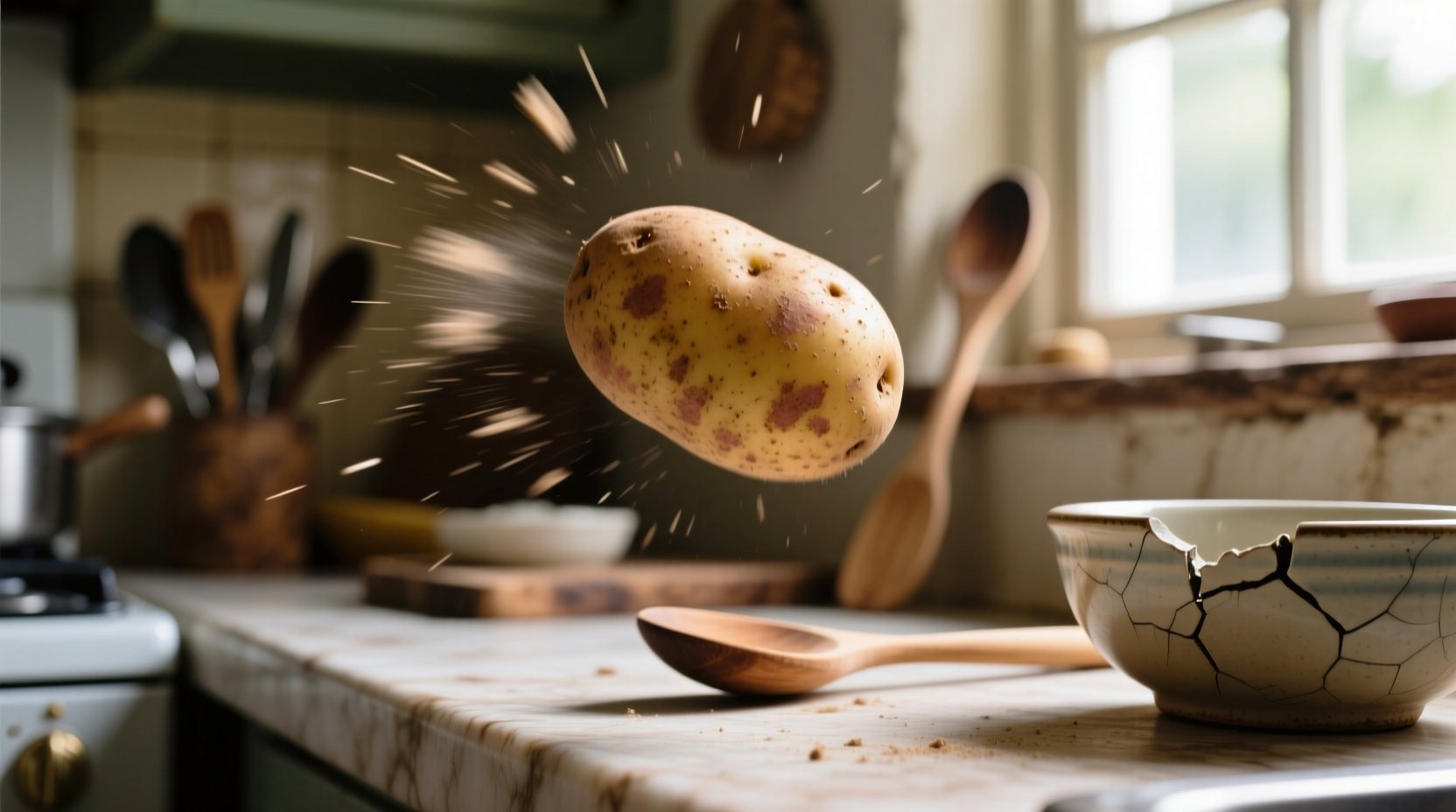Mastering the Art of Potato Throwing: From Backyard Games to Cultural Traditions
While it might sound unusual at first, learning how to throw a potato properly connects us to agricultural traditions, physics principles, and community games practiced around the world. Whether you're preparing for a harvest festival competition or simply curious about this niche skill, understanding proper technique transforms a simple activity into something meaningful and safe.
The Historical Context of Potato Throwing Activities
Potato throwing isn't just random—it's rooted in agricultural traditions. In many European harvest festivals dating back to the 19th century, communities developed potato-related games as both entertainment and skill testing. The UN Food and Agriculture Organization documents how tuber crops like potatoes became central to rural community bonding activities across Northern Europe.
| Historical Period | Region | Common Potato Throwing Activities |
|---|---|---|
| 1800s-1900s | Northern Europe | Harvest festival accuracy competitions |
| Early 1900s | North America | Farm school physical education exercises |
| Modern Era | Global | Agricultural fair competitions and team-building events |
Why Proper Technique Matters for Throwing Potatoes
Unlike balls designed for throwing, potatoes present unique challenges. Their irregular shape, variable weight (typically 5-8 ounces for standard varieties), and lack of aerodynamic design require specific throwing approaches. According to sports biomechanics research from the National Institutes of Health, objects with irregular shapes require more wrist stabilization during release to maintain trajectory control.
Step-by-Step Guide to Perfect Potato Throwing Form
Preparing Your Equipment
Selecting the right potato makes a significant difference. Medium-sized russet potatoes (about the size of a baseball) provide the best balance of weight and grip. Avoid overly smooth or wet potatoes, as they're harder to control. The USDA Agricultural Research Service confirms that russets maintain consistent density ideal for throwing activities.
Perfecting Your Grip
Your grip determines both accuracy and safety:
- Accuracy grip: Place your index finger along the longest axis with thumb opposite for stabilization
- Distance grip: Cradle the potato in your palm with fingers wrapped around for maximum force
- Game-specific grip: For "hot potato" style games, use fingertips only for quick transfers
Body Mechanics for Effective Throwing
Follow these steps for optimal potato throwing technique:
- Stand with feet shoulder-width apart, non-throwing foot forward
- Hold the potato at eye level with throwing arm
- Rotate shoulders away from target while keeping eyes on target
- Step forward with opposite foot while bringing throwing arm forward
- Release potato at shoulder height with wrist snap for accuracy
- Complete follow-through motion toward target

Safety Considerations for Potato Throwing Activities
Safety must be your priority when throwing potatoes. While seemingly harmless, a potato thrown with force can reach speeds exceeding 30 mph, potentially causing injury. The American Academy of Pediatrics recommends maintaining at least 15 feet between participants in potato-throwing games for children and 25 feet for adults.
| Activity Type | Minimum Safe Distance | Recommended Protective Gear | Age Appropriateness |
|---|---|---|---|
| Casual backyard play | 10-15 feet | None | 8+ years |
| Accuracy competitions | 20-25 feet | Safety glasses | 12+ years |
| Distance competitions | 30+ feet | Full face protection | 16+ years |
Potato Throwing in Modern Contexts
Today, potato throwing has evolved beyond simple games. Many agricultural education programs incorporate potato-throwing exercises to teach physics concepts. The National Science Teaching Association recognizes potato-based activities as effective tools for demonstrating projectile motion and force principles in classroom settings.
Community events like the annual Potato Games Festival in Aroostook County, Maine, feature organized potato-throwing competitions that attract participants from across North America. These events follow strict safety protocols while celebrating regional agricultural heritage.
Troubleshooting Common Potato Throwing Mistakes
Even with proper technique, beginners often encounter these issues:
- Inconsistent throws: Usually caused by improper grip or inconsistent release point
- Short distance: Often results from incomplete follow-through or improper weight transfer
- Poor accuracy: Typically due to head movement during throw or inconsistent stance
Professional coaches recommend recording your throws to identify form issues. Many community recreation centers now offer "farm sport" clinics that include potato-throwing instruction alongside other traditional agricultural games.
Expanding Your Skills: From Potatoes to Other Produce
Once you've mastered potato throwing, you can apply similar principles to other agricultural products. Each crop presents unique throwing challenges based on weight, shape, and surface texture. The International Harvest Games Federation recognizes competitions for various produce items, with potatoes remaining one of the most popular categories due to their consistent size and weight characteristics.











 浙公网安备
33010002000092号
浙公网安备
33010002000092号 浙B2-20120091-4
浙B2-20120091-4